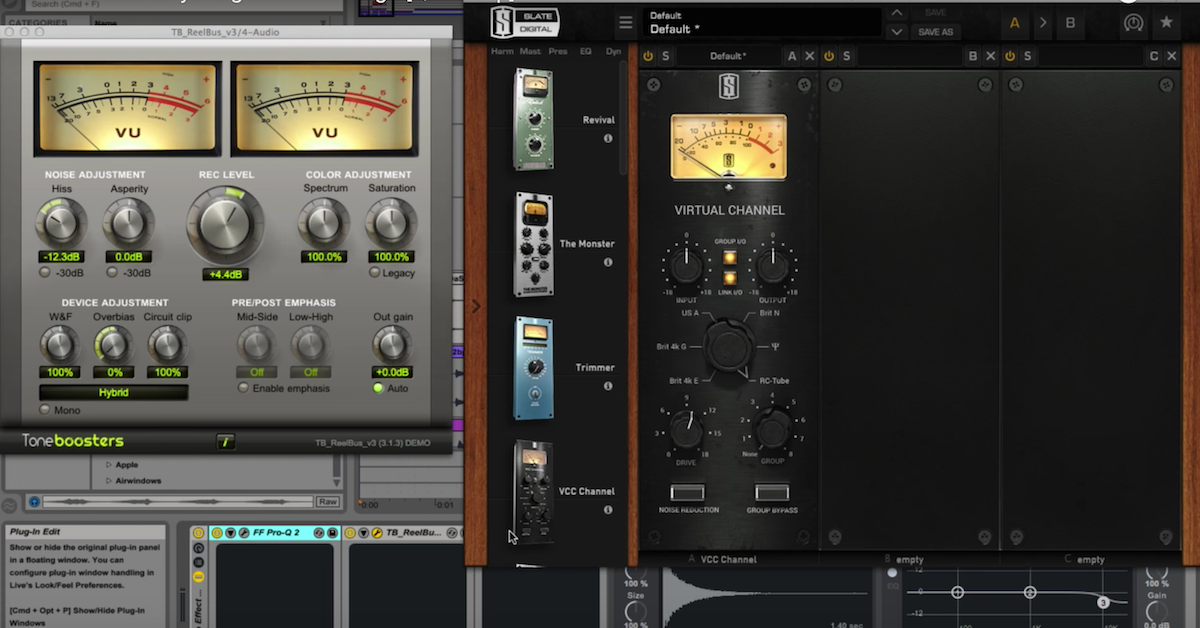How to Use Tape Saturation to Enhance a Mix
Today, I am going to be showing you how to use tape saturation plug-ins – specifically from Universal Audio – in an effort to make your mixes sound more vintage and warm.
The track I’m going to be using is Ocean, from the band, Sunny Love and the Moon Parade, whose album I recorded, produced, mixed, and mastered, which comes out later this week. A lot of this band’s songs have a vintage vibe going on. Let’s take a listen.
[mix]
Alright. So, for this project, although we recorded in a good room with nice equipment, we did not have the luxury of recording to analog tape, which a lot of projects these days don’t.
So, fortunately, I had access to the Studer A800, and the Ampex ATR-102 from Universal Audio. So the way that I’ve been working lately and on this project, is I have all of my drums and percussion being sent – hard sent – through an aux track. I’ve got all of my keys, guitars, and bass going through an aux track, and all of my vocals going through a separate aux track.
On these aux tracks, I have the Studer A800 on each of them, using varying types and degrees of tape saturation. Let’s focus on the drums for a minute.
[drums play]
Let’s bypass the effect.
[drums, no tape saturation]
So, we’re hearing a little bit of a boost in volume in the drums. We’re also hearing slightly more punch, and a little bit of low end drive that really affects the kick drum in a cool way.
Something to keep an eye on with these effects is basically just a balance between the input and the output. I could really drive this if I would like.
[drums, heavy tape saturation]
But I wanted to keep it pretty subtle. We also have control of the inches per second. If I change from 15 to 7.5, we’re going to hear a loss in high end.
[drums, adjusting inches per second]
That might be great if you want a really vintage sound, or we could go up to 30 inches per second for a very hi-fi sound.
[drums play at 30 inches per second]
I wanted to split the difference, so I kept it at 15 inches per second, and we also have different tape types.
Let’s move over to the instrument buss, which includes the guitars.
[instrument buss plays]
Definitely warms things up a little bit and brings them forward in the mix.
Lastly, let’s take a listen to the vocals.
[vocals]
And as you can see, I am driving this particular instance of the plug-in a little bit harder than the others, because I really wanted to saturate the vocal and give it that sound.
Okay, so I have found that this plug-in really does work great on individual instruments, but I’ve been really loving it on these sub-aux tracks that I have.
Let’s move forward to the Master fader now, and I’m going to show you a little bit about how I use the Ampex ATR-102. Let’s bypass the effect.
[mix]
When I first demoed this effect, I had never really heard any plug-in like it, so I had to get it because it really helps with spatialization, it helps the bass and drums sit together, a little bit of a boost in volume, and really just makes things sound a little bit more round. Plus, there’s so many options in terms of types of tape here, inches per second…
Let’s go down to 7.5.
[song at 7.5 inches per second]
Very versatile plug-in indeed.
So, I can’t strongly recommend enough that you at least demo the Universal Audio ATR-102 and Studer A800. If you have any questions, e-mail me at ianvargo@gmail.com. Once again, this has been Ian Vargo with The Pro Audio Files. Make sure to check out Sunny Love and the Moon Parade.





